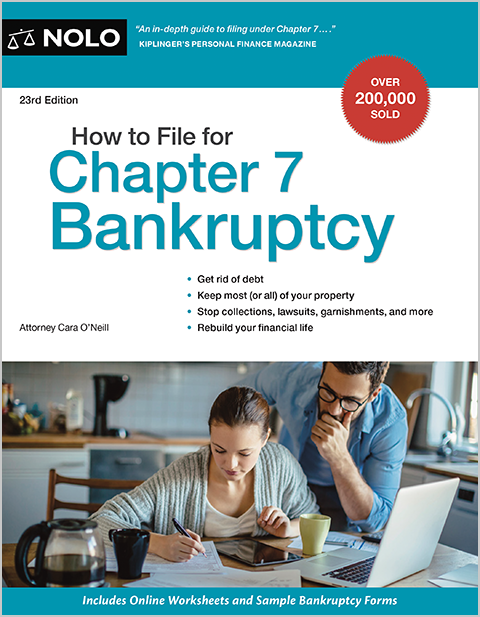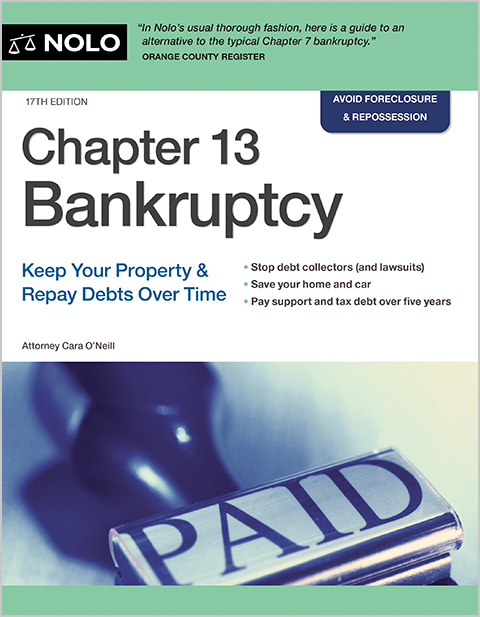Chapter 7 erases personal liability, but most liens survive. Learn about lien removal, reaffirmation, and redemption to protect property or clear title after Chapter 7 bankruptcy.
Chapter 7 bankruptcy removes your personal liability for many debts, but most liens survive unless you use specific legal tools and procedures to remove them. This expert guide explains in detail how liens are treated, how to protect your property, and exactly how to use the bankruptcy system to remove, avoid, or manage liens, including the step-by-step process for eliminating judgment liens from property protected by bankruptcy exemptions.
- What Is a Lien and How Are Liens Created?
- Does Chapter 7 Bankruptcy Automatically Remove Liens?
- Types of Liens and Their Treatment in Chapter 7
- Handling Secured Property in Chapter 7: Your Options
- Motion to Avoid Judicial Lien: 7-Step Process in Chapter 7
- Liens That Survive Chapter 7 Bankruptcy: Tax and Statutory Liens
- What Is Lien Stripping?
- Five Critical Mistakes When Avoiding Judgment Liens in Chapter 7
- When to Hire a Bankruptcy Attorney for Lien Avoidance
What Is a Lien and How Are Liens Created?
A lien is a creditor's legal right against your property, often recorded to ensure payment of a debt. Voluntary liens, like mortgages and car loans, result from agreements you sign. Involuntary liens, like judgment liens, tax liens, and mechanic's liens, can be placed against your property by law, court order, or statute, even without your consent. Properly perfected liens give creditors the right to take your property if you default, even after bankruptcy.
Does Chapter 7 Bankruptcy Automatically Remove Liens?
No. Chapter 7 bankruptcy eliminates your personal liability for most debts, but does not remove valid liens from your property by default. After bankruptcy:
- The creditor can't pursue you for a discharged debt.
- The lien remains on the property, so the creditor may still enforce it by foreclosing, repossessing, or demanding payment if you want to sell or refinance.
Types of Liens and Their Treatment in Chapter 7
Voluntary liens and involuntary liens are treated differently in bankruptcy. For liens to be valid in bankruptcy, they must be "perfected" or filed with the proper agency.
Voluntary Liens
Voluntary or consensual liens are liens that you agree to when financing a purchase. They include:
- Mortgages. The lender can foreclose on your home if you default, even after filing for bankruptcy.
- Car loans. The lien allows the repossession of your vehicle in Chapter 7 unless the payment issue is addressed through reaffirmation of the car loan or redemption.
- Purchase money security interests. Financing through retailers, typically for furniture, jewelry, appliances, and electronics, often includes a lien allowing for repossession or a lawsuit to recover a deficiency if it's sold for less than its value.
Involuntary Liens
Involuntary liens include those allowed by statute or obtained after a creditor sues you and wins and places a judgment lien against your property.
- Tax liens. These remain after bankruptcy regardless of debt discharge. The property owner must pay them when selling the property to provide a clear title.
- Mechanic's liens. These liens are allowed by law and help a contractor collect for unpaid work and materials. Typically, they survive unless attacked for improper perfection.
- Judgment liens. Created when a creditor sues and records the judgment.
Judgment Liens in Chapter 7 Bankruptcy
You can remove (avoid) judgment liens in Chapter 7 bankruptcy in certain circumstances. They are the only liens you can potentially remove, subject to special avoidance procedures in bankruptcy (more below).​
Tip. If you're being sued, it's usually best to file for bankruptcy before the creditor wins the lawsuit and places a lien against your property. Filing for bankruptcy when being sued often eliminates the underlying debt that gave rise to the lawsuit.
Handling Secured Property in Chapter 7: Your Options
If you file for Chapter 7 and have property with a voluntary lien against it—usually your house or car—you must tell the lender what you want to do with it. You do this by filing a Statement of Intention form. Here are your options.
Reaffirm
This involves legally recommitting to paying the debt and keeping the property. You remain personally liable for the debt. This approach requires written agreement and, if unrepresented, court approval. A reaffirmation agreement can be rescinded before discharge or within 60 days of its filing. (11 U.S.C. § 524(c)-(k).)
Redeem
In this instance, you pay the creditor the property's current fair market value in a lump sum (often using redemption financing). The lien and debt are eliminated, even if what you owe far exceeds the value. You must file a motion and receive court approval. (11 U.S.C. § 722.) This section applies to personal property for personal and household use—typically vehicles and household goods—not to real estate.
Surrender the Property
You have no further obligation. The debt will be discharged in the bankruptcy, and the lien will be extinguished after you surrender the property in Chapter 7.
Ride Through
Some lenders allow you to keep the car as long as you continue making the payment, even without a reaffirmation agreement. The lender can take the car back at any time. However, you can also return it at any time, in any condition, without penalty. It's important to note that debtors don't have the right to a ride through option—it's lender-dependent.
Tip. The process for declaring your intention with leased property is similar but slightly different. Learn about what to expect with leased properties in Chapter 7.
Motion to Avoid Judicial Lien: 7-Step Process in Chapter 7
Not all liens can be removed or "avoided" by filing a motion. You're limited to judgment liens that impair or prevent you from receiving the benefit of your federal or state bankruptcy exemptions (the laws that protect property in bankruptcy). You can also avoid nonpurchase, nonpossessory money liens on certain household goods, tools of the trade, and health aids. (11 U.S.C. § 522(f).)
Step 1. Confirm the Nature of the Lien
You can only avoid judicial or judgment liens. Security interests, such as mortgages and auto loans, and statutory liens, such as tax, HOA, and mechanic's liens, can't be removed.​
Step 2. Value Your Property
Obtain a fair market valuation of the liened property, such as an appraisal, tax assessment, or comparable sales.
Step 3. Calculate Exemption Impairment
Add together all existing liens (including mortgages), plus your applicable exemption amount, plus the judgment lien. If the total exceeds the property's value, the lien impairs your exemption and is either partially or completely avoidable.
The specific formula to determine whether a lien impairs an exemption is as follows: It's the extent to which the sum of the lien to be avoided, all other liens on the property, and the exemption amount exceeds the value of the debtor's interest in the property. (11 U.S.C. § 522(f)(2)(A).)
Example 1. Assume your home's FMV is $200,000 and the first mortgage lien is $150,000. Your state's homestead exemption is $50,000, and you have a judgment lien against the home for $20,000. ($150,000 (mortgage) + $50,000 (exemption) + $20,000 (judgment lien) = $220,000.) Since $220,000 exceeds the home's $200,000 value, the judgment lien impairs the exemption by $20,000. Therefore, you can avoid the entire $20,000 judgment lien.
Example 2. Assume your home's FMV is $200,000 and the first mortgage lien is $150,000. Your state's homestead exemption is $30,000, and you have a judgment lien against the home for $30,000. ($150,000 (mortgage) + $30,000 (exemption) = $180,000) This leaves $20,000 in nonexempt equity ($200,000 - $180,000 = $20,000). Only $10,000 of the judgment lien can be avoided (the portion that impairs the exemption). The remaining $20,000 attaches to the nonexempt equity and survives bankruptcy.
Step 4. Prepare and File the Court Motion
File a "Motion to Avoid Judicial Lien" in your bankruptcy case. Courts often provide fill-in forms. You'll attach evidence of valuation, a copy of the lien, and your calculation.
Step 5. Serve the Motion on the Lienholder
Follow local or federal rules for serving the judgment creditor.
Step 6. Attend a Hearing
If the creditor objects or the court requires it, be prepared to explain the impairment calculation and valuation at the hearing. If no objection is filed, the court might not require a hearing.
Step 7. Obtain and Record the Court Order
After the judge grants your motion, file a certified copy of the order with your county recorder to clear the title. Confirm the lien's removal from both the title and your credit reports.
Deadline. File the motion before your bankruptcy case closes. However, if you didn't do so, many courts will allow you to reopen the case to remove the lien.
Liens That Survive Chapter 7 Bankruptcy: Tax and Statutory Liens
Here are examples of what you can expect to occur with other liens in Chapter 7.
- Tax liens. Generally not removable in bankruptcy. Even if the bankruptcy discharges the tax debt (which happens if it is sufficiently old and meets other requirements), the lien remains unless you successfully negotiate with the IRS or state to release it. Apply for a "Certificate of Discharge" if it's resolved.
- Mechanic's liens. These survive bankruptcy unless unperfected or subject to challenge under state law.
- Nonpurchase money security interests. Liens on certain household goods, tools of the trade, and aids to health can be avoided. (11 U.S.C. § 522(f).)
What Is Lien Stripping?
Lien stripping is a bankruptcy process in which the court removes an underwater junior mortgage or HELOC from a residential property. Lien stripping isn't available in Chapter 7. It's only available in Chapter 13. (Bank of America, N.A. v. Caulkett, 575 U.S. 790 (2015).)
Five Critical Mistakes When Avoiding Judgment Liens in Chapter 7
- Failing to file the Statement of Intention or motion to avoid lien before case closure.
- Using the wrong exemption scheme (check with your state exemptions to see if federal exemptions are available to you) or miscalculating equity.
- Forgetting to record lien avoidance orders at the county recorder.
- Assuming a discharged debt means a released lien.
- Reaffirming without understanding the risk and making yourself liable again.
When to Hire a Bankruptcy Attorney for Lien Avoidance
Liens can survive bankruptcy and impede your financial recovery unless you take action. Working with an experienced bankruptcy attorney can protect your assets and ensure all deadlines and procedures are met so you receive a true financial fresh start.
|
|
- What Is a Lien and How Are Liens Created?
- Does Chapter 7 Bankruptcy Automatically Remove Liens?
- Types of Liens and Their Treatment in Chapter 7
- Handling Secured Property in Chapter 7: Your Options
- Motion to Avoid Judicial Lien: 7-Step Process in Chapter 7
- Liens That Survive Chapter 7 Bankruptcy: Tax and Statutory Liens
- What Is Lien Stripping?
- Five Critical Mistakes When Avoiding Judgment Liens in Chapter 7
- When to Hire a Bankruptcy Attorney for Lien Avoidance

